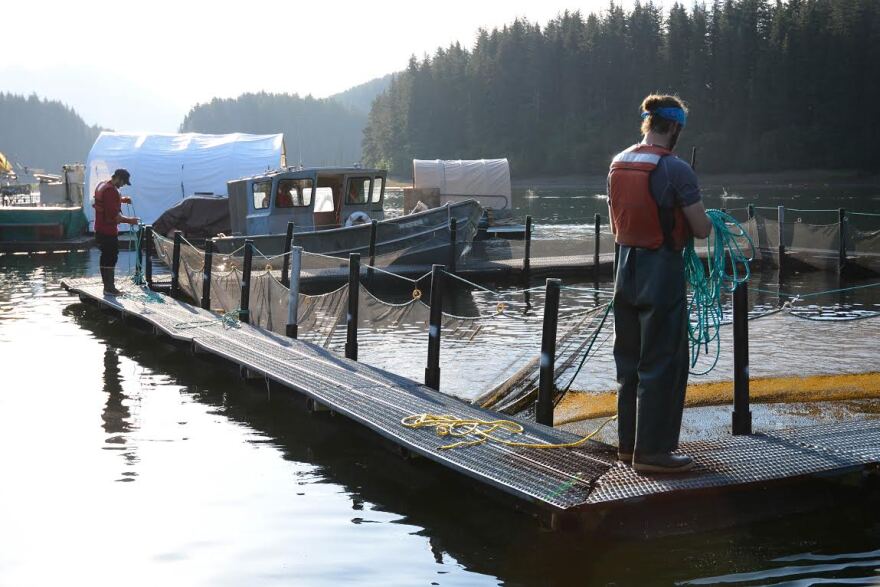The Cook Inlet Aquaculture Association has been trying to move a majority of its net pens in the Tutka Bay Lagoon to the head of Tutka Bay for about four years. The hotly debated issue has led to packed community meetingsand questions about the impact of raising fish in the area.
Due to the controversy, the hatchery association has contracted the Kachemak Bay National Estuary Research Reserve to study the bay’s food supply and potential impacts of the net pens.
The association wanted to move the majority of its hatchery operation, permitted to raise up to 100 million pink salmon, from the lagoon to the head of the bay this season.
It plans to place about 25,000 square feet of net pens in the area for about six to eight weeks each year, but the move was delayed by the permitting process. Kachemak Bay Research Reserve Biologist Steve Baird said that was a stroke of luck.
“By having to start next year instead, that gives us a year to get some baseline data,” he said.
Baird is leading the study, which began in May. Researchers’ work will focus primarily on assessing zooplankton populations in the area.
“We’re going to look at both population mix and density of zooplankton in the water,” Baird explained.
Zooplankton are juvenile salmon’s primary food supply, and the young fish have been known to target particular varieties.
The reserve will also study the ocean floor directly below and around the future net pens. Researchers will use a claw to scoop up samples on the bottom to assess its makeup and find out what animals are living in the gravel, mud or sediment.
The study will end later this year. The short timeframe won’t allow researchers to understand how conditions in Tutka Bay vary year to year, but Baird said it’s enough to see if the pens have an impact.
“A year will still give us a good snapshot that will let us see if things change dramatically,” he said. “If things are wildly different next year and water temperature and salinity and those things are the same, then there might be an effect of raising all those fish back there.”
Cook Inlet Aquaculture Association Executive Director Gary Fandrei said the association typically conducts these studies itself with help from the Alaska Department of Fish and Game. But, after hearing concerns from area residents over the ecology and food supply, Fandrei said it wanted a third party to do the work.
“Historically we have sampled for zooplankton when we’ve released fish in the past, and we would continue with doing that,” Fandrei explained. “This study here was to look a little bit more detailed in terms of where the net pens are located, to look at the bottom organisms to see if there were any changes occurring there as a result of the net pens.”
If the study finds zooplankton are in short supply, the association could reduce the number of fish being raised at the head of the bay.
The research reserve will deliver its report at the end of 2017. Fandrei said it could be contracted for additional research after the pens are in place, but that decision will be made later this year.
The association still needs one more permit from the Alaska Department of Environmental Conservation before it can move the pens. Some of the hatchery operation will remain in the lagoon, where eggs will continue to be harvested.



